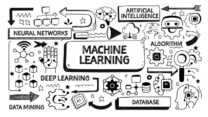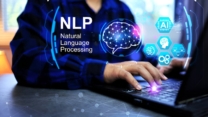
The Ethics of AI: Bias, Transparency, and Accountability
Artificial Intelligence (AI) is transforming industries at an unprecedented pace, from healthcare diagnostics to financial risk assessments and autonomous vehicles. Yet, as AI systems permeate our daily lives, pressing ethical questions emerge, particularly around bias, transparency, and accountability. These principles are essential to ensure AI supports society fairly, responsibly, and sustainably.
Understanding AI Ethics
AI ethics refers to the moral guidelines and principles guiding the design, development, deployment, and governance of AI systems. Ethical AI aims to maximize societal benefit while minimizing harm. Unlike traditional software, AI systems can learn from data, make autonomous decisions, and interact with humans in complex ways. This capacity introduces unique challenges that require careful ethical scrutiny.
Why Bias, Transparency, and Accountability Matter
- Bias: AI systems trained on unrepresentative data or flawed algorithms can perpetuate societal inequalities.
- Transparency: Decision-making processes must be understandable to foster trust and mitigate risks.
- Accountability: Stakeholders must be responsible for AI outcomes to ensure fairness and safety.
These three pillars form the foundation of responsible AI deployment, impacting both societal trust and regulatory compliance.
Bias in AI
Bias is one of the most visible and concerning ethical challenges in AI. It can manifest in recruitment tools, facial recognition systems, healthcare diagnostics, and predictive policing.
Sources of Bias
- Data Bias: Historical data reflecting societal inequalities or incomplete datasets.
- Algorithmic Bias: Model design assumptions and optimization objectives that unintentionally favor certain groups.
- Interaction Bias: AI systems learning from user behavior that reflects existing prejudices.
Case Examples
| Industry | AI Application | Observed Bias |
|---|---|---|
| Healthcare | Predictive Risk Models | Underdiagnosis in minority populations due to skewed clinical datasets |
| Recruitment | Resume Screening AI | Preference for male candidates due to historical hiring data |
| Law Enforcement | Predictive Policing | Over-policing in low-income neighborhoods due to biased crime reports |
Mitigating Bias in AI
Organizations can adopt several strategies to minimize bias:
- Diverse and Representative Data: Include data across demographics, regions, and scenarios.
- Algorithmic Fairness Techniques: Reweighting, resampling, or fairness-aware optimization methods.
- Human Oversight: Multi-disciplinary teams, including ethicists and domain experts, reviewing outputs.
- Continuous Auditing: Regular bias detection and system recalibration.
Transparency
Transparency ensures AI systems are understandable and interpretable to users, regulators, and developers. Without transparency, AI becomes a “black box,” eroding trust and creating ethical risks.
Challenges to Transparency
- Complex Models: Deep learning and neural networks are inherently difficult to interpret.
- Proprietary Constraints: Companies often restrict access to model architecture or datasets to protect intellectual property.
- Inconsistent Standards: Lack of unified guidelines for AI explainability across sectors.
Strategies to Enhance Transparency
- Explainable AI (XAI): Techniques that clarify how models make decisions.
- Documentation: Clear records of model architecture, training data sources, and decision pathways.
- User-Centric Interfaces: Tools allowing stakeholders to query and understand AI outputs in plain language.
- Regulatory Compliance: Aligning with GDPR, CCPA, or sector-specific AI regulations requiring explainability.
Example: A healthcare AI platform predicting patient readmission risks can display which features—such as age, prior diagnoses, or medication history—contributed most to the prediction, making it understandable for clinicians and patients.
Accountability in AI
Accountability ensures that outcomes from AI systems are attributed to the correct stakeholders, creating a mechanism for redress and ethical oversight.
Challenges to Accountability
- Distributed Development: Multiple contributors—data scientists, vendors, end-users—complicate responsibility.
- Autonomous Decision-Making: AI agents making independent choices blur accountability lines.
- Regulatory Lag: Laws and standards often fail to keep pace with technological advances.
Approaches to Strengthen Accountability
- Governance Frameworks: Define roles and responsibilities for each stage of the AI lifecycle.
- Independent Audits: Third-party assessments to verify fairness, compliance, and performance.
- Redress Mechanisms: Clear pathways for users to challenge decisions or report harm.
- Ethical Certification: International guidelines, such as UNESCO’s AI ethics recommendations, provide a structured approach.
Example: In financial services, AI systems assessing loan eligibility must have a documented process for appeals, allowing individuals to contest decisions and regulators to audit outcomes.
Integrating Human-Centric AI Design
Beyond the conventional pillars of bias, transparency, and accountability, a human-centric design approach ensures that AI systems are built around human values, empathy, and societal needs.
Key Principles of Human-Centric AI
- Participatory Design: Engage affected communities in AI development to reflect diverse perspectives.
- Ethical Risk Forecasting: Predict potential harms before deployment, including social, economic, and psychological impacts.
- Adaptive Governance: Flexible policies that evolve with AI technologies and societal norms.
Example: In urban planning, AI-driven traffic management systems can incorporate citizen feedback on accessibility and safety, rather than relying solely on efficiency metrics.
Emerging Metrics for Ethical AI
To operationalize ethics, organizations can adopt measurable indicators. Below is an example table of metrics to monitor AI ethics:
| Ethical Dimension | Metric | Frequency |
|---|---|---|
| Bias | Disparity in outcomes across demographics | Quarterly |
| Transparency | Percentage of decisions with explainable outputs | Monthly |
| Accountability | Number of audits and redress cases resolved | Annually |
| User-Centric Impact | User satisfaction and trust scores | Biannually |
Conclusion
The ethics of AI—particularly bias, transparency, and accountability—are no longer abstract concepts but core imperatives for responsible innovation. Organizations must proactively address these dimensions, leveraging frameworks, human-centric design, and measurable metrics to ensure AI systems benefit society equitably.
As AI continues to evolve, integrating ethical principles at every stage—from data collection to deployment—will not only mitigate risks but also strengthen public trust, regulatory compliance, and long-term sustainability. By adopting a forward-thinking, human-centered approach, AI can serve as a force for social good while safeguarding individual rights and collective values.
Frequently Asked Questions (FAQs)
What is AI bias and why is it a concern?
AI bias occurs when algorithms produce unfair or discriminatory outcomes due to skewed data, flawed design, or embedded human prejudices. It is a concern because it can perpetuate inequalities, harm individuals, and create legal and reputational risks for organizations.
How can AI transparency be improved?
Transparency can be enhanced through Explainable AI (XAI), detailed model documentation, user-friendly interfaces, and adherence to regulatory standards such as GDPR or CCPA. This allows stakeholders to understand how AI makes decisions.
Who is accountable for AI decisions?
Accountability involves assigning clear responsibility across all stakeholders, including developers, vendors, and users. Governance frameworks, independent audits, and redress mechanisms help ensure accountability for AI outcomes.
What strategies reduce bias in AI?
Key strategies include using diverse and representative datasets, fairness-aware algorithms, continuous bias auditing, and multi-disciplinary review teams including ethicists and domain experts.
How does human-centric AI improve ethical outcomes?
Human-centric AI involves participatory design, ethical risk forecasting, and adaptive governance. By prioritizing human values, it ensures AI aligns with societal needs, fairness, and safety.
What industries are most affected by AI ethics?
Healthcare, finance, recruitment, law enforcement, and autonomous systems are highly impacted. Decisions made by AI in these fields can significantly affect individuals, making ethical AI practices crucial.












